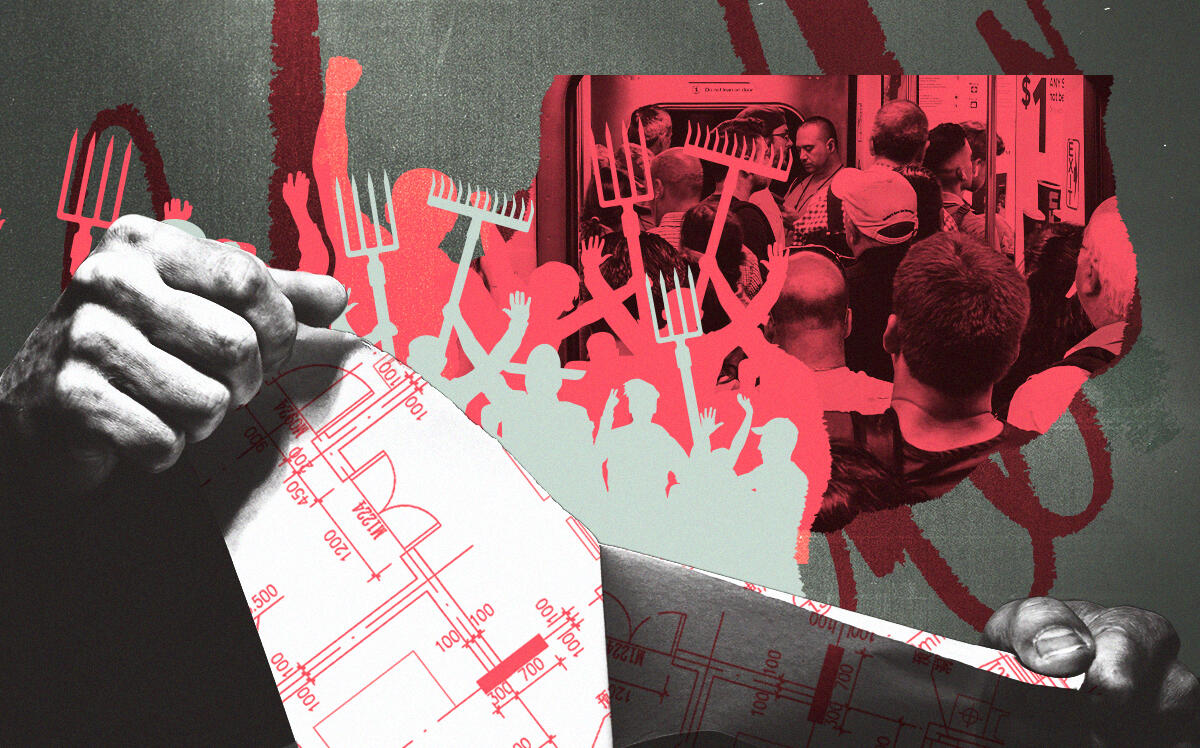 The rezoning conundrum
The rezoning conundrum
Trending
Suburban Nimbys oppose more housing. Do they have a point?
To stop apartment projects, locals point to their own failed model

With suburbs under pressure to help ease the housing crisis, a Long Island town just did something extraordinary: It banned residential development.
Hempstead’s six-month moratorium on new homes in North Lawrence and Inwood will prevent supply from being added to an extremely tight market. That will only make housing costlier and harder to get, but it will pacify — temporarily, at least — locals who were hysterical about a plan to add more than 1,000 apartments in derelict areas of their villages.
“Right now [traffic] is terrible and it’s getting worse,” Lawrence resident Steven Rocklin said last week at a packed town board meeting covered by Newsday. “The people in the Five Towns would like to keep it the way it is now and not another Brooklyn with overcrowding and development.”
Is he a classic Nimby? Yes. But he has a point.
It’s easy to dismiss the not-in-my-back-yard crowd as ignorant, selfish and sometimes racist, but their voices shape government decisions. They certainly did in Hempstead.
Besides, they are not entirely wrong.
Suburbanites know what life is like in their towns, and in many of them, traffic is indeed bad. When virtually every activity — shopping, exercising, working, dining out, going to school, etc. — requires driving, congestion becomes a major problem.
Not only that, it’s unsolvable. Widening roads is expensive and induces demand, so congestion soon returns. Automated vehicles did not pan out. Even work-from-home hasn’t helped: Traffic is back to pre-pandemic levels.
“The village is at capacity,” Newsday quoted Lawrence Mayor Alex Edelman as saying. “There’s no room for development at all. There’s no way to get out of here. It’s impossible to move.”
He’s admitting what urban planners figured out long ago: Suburban development as we know it is unsustainable.
Read more
 The rezoning conundrum
The rezoning conundrum
 In socialists we trust: Tiffany Cabán and the great housing breakthrough
In socialists we trust: Tiffany Cabán and the great housing breakthrough
 This is the Eric Adams that real estate has been waiting for
This is the Eric Adams that real estate has been waiting for
Because of traffic, communities that only allow single-family detached homes — meaning they are automobile-dependent — cannot accommodate growth without quality of life deteriorating. But forbidding new housing causes home prices to rise, and eventually young people cannot afford to live in these places.
“The area is in need of good housing for young couples,” Rabbi Mordechai Kamenetzky said at the meeting. “There are no apartments available.”
Ah, apartments.
Apartments scare the bejesus out of suburbanites. When the people of Lawrence and Inwood envision 1,000 apartments, they envision 2,500 more people doing the same thing they do: driving everywhere.
Need groceries? Drive.
Dentist appointment? Drive.
Soccer practice? Haircut? Lunch with friends? Drive, drive, drive.
The Nimbys are right: Adding more drivers does not work. But there is another way, if they can be persuaded to accept it.
For suburban growth to be sustainable, apartments must be built where residents don’t have to drive and won’t want to drive — near transit and services.
Kind of like Brooklyn.
Steve Rocklin might consider Brooklyn overcrowded and overdeveloped, but 2.6 million people live there for a reason. They get around without feeling like “it’s impossible to move,” as it is in Lawrence, according to its mayor.
Moreover, if not for Brooklyn, some of those 2.6 million people would be pushing out into the suburbs, competing with people like Rocklin for homes, road space and parking. Cities make suburbia possible by absorbing so much population.
In retrospect, the suburbs as they exist were a mistake, because the model cannot be continually replicated. But a new model, with walkable, mixed-use areas and a transit connection, can be. It’s been done in a bunch of places, including Long Island.
Hempstead officials are well aware of this. The moratorium paused its plan for transit-oriented development, which says: “The Town recognizes the benefits of development that is consistent with smart growth principles, which encourages a mix of building types and uses, diverse housing and transportation options, walkable neighborhoods, development within existing neighborhoods and community engagement.”
The community engagement part is the problem. Hempstead has given itself six more months to convince villagers in North Lawrence and Inwood that the apartment dwellers would not clog up roads like the villagers have. If the locals remain obstinate, town leaders must gather the courage to say, “You’re wrong, and we’re going ahead with the plan.”
Anyone who doesn’t like the results can move. I hear Brooklyn is nice.




